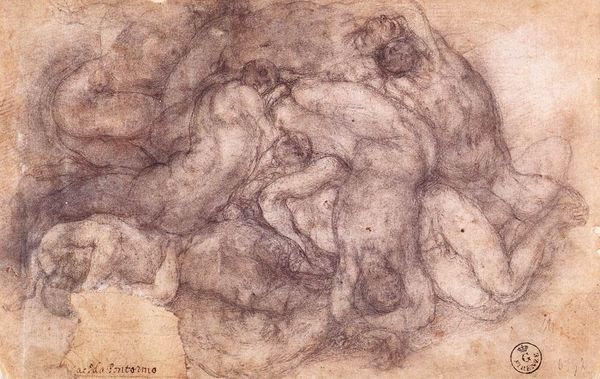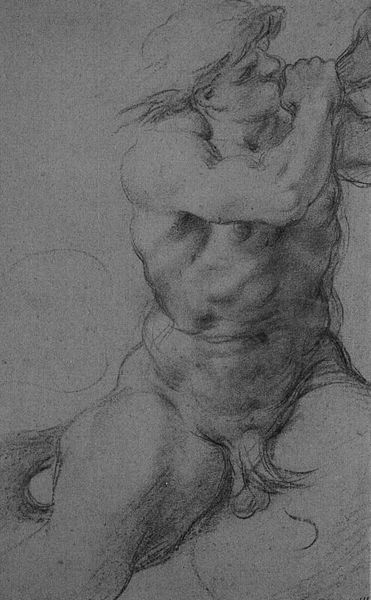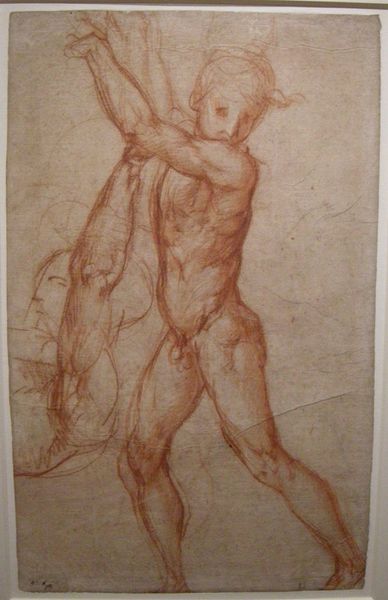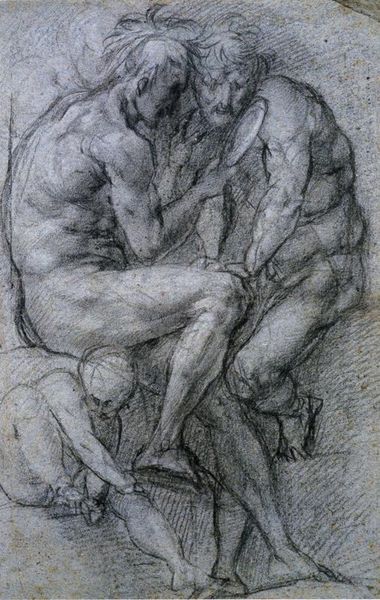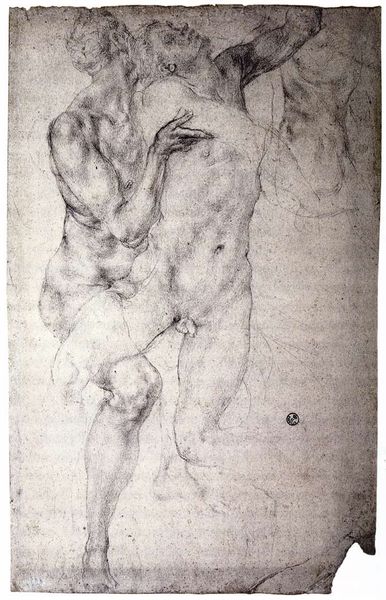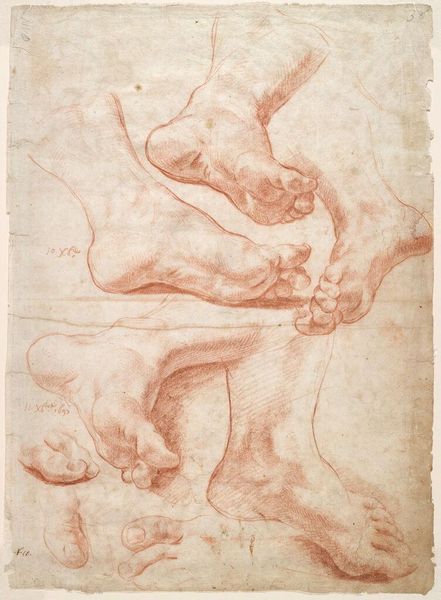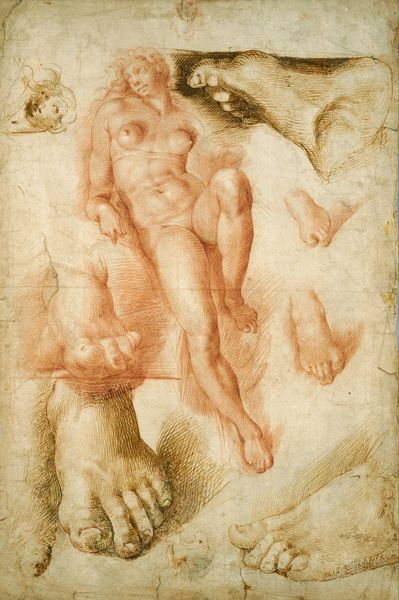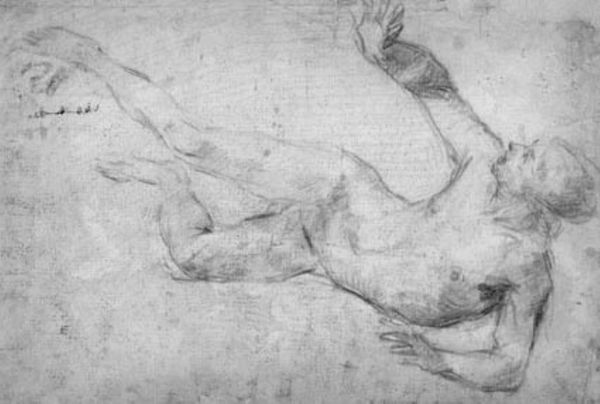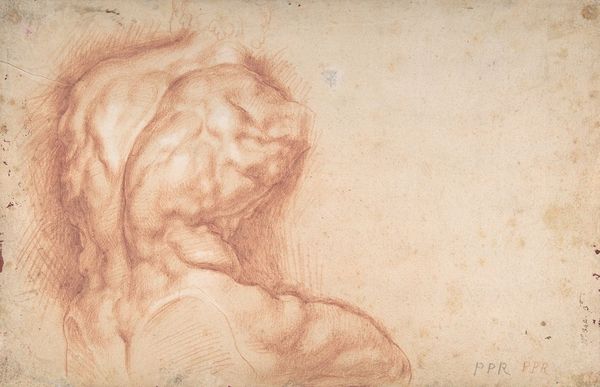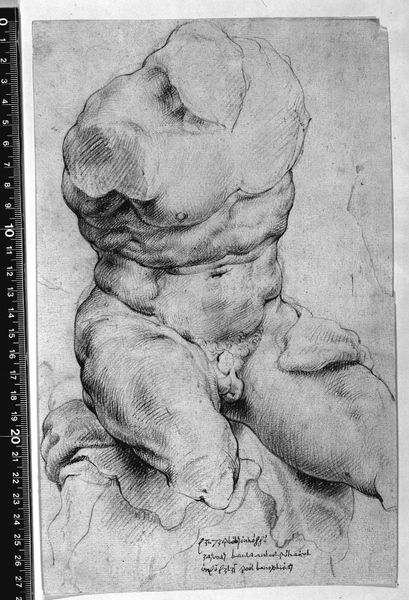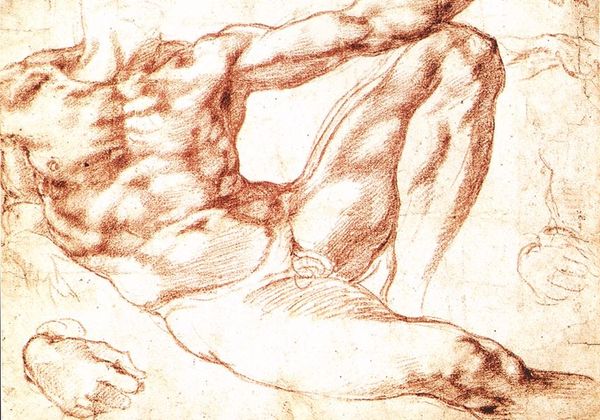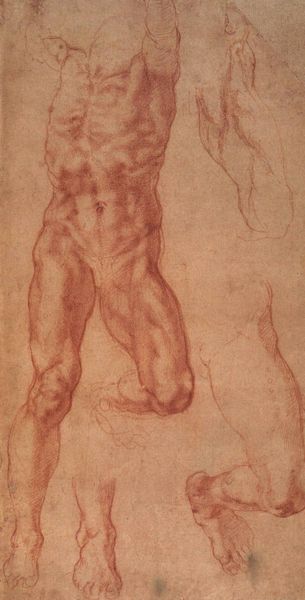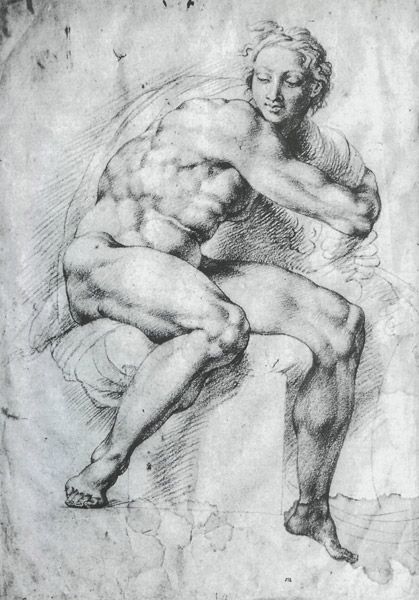
drawing
#
drawing
#
amateur sketch
#
toned paper
#
light pencil work
#
pencil sketch
#
charcoal drawing
#
possibly oil pastel
#
pencil drawing
#
underpainting
#
sketch
#
human
#
portrait drawing
#
male-nude
#
watercolor
Copyright: Public domain
Curator: Looking at this study, "Two Figures", you immediately get a sense of raw, unfinished power. What’s your take? Editor: There's a melancholic undertone. They seem burdened, almost collapsing under some unseen weight. Are these studies for a larger composition? Curator: It’s suspected they may relate to the Sistine Chapel ceiling. But let’s look at the toned paper—a scarce and costly commodity in its time. Think about the artisanal workshops where pigments were ground, and the careful application needed to get such even coverage, allowing Michelangelo to then render figures with charcoal and possibly oil pastels with such precision. The material preparation alone signifies considerable expense. Editor: Absolutely, and knowing the cultural context reinforces the artistic choices. The commission for the Sistine Chapel was hugely significant for the papacy, a very public display of wealth and power. This drawing offers a glimpse behind the scenes, as the Renaissance was being made. Was it a demonstration of papal authority or even personal piety? Curator: Interesting idea! But look closely at the overlapping forms, the deliberate cross-hatching that builds volume and musculature. I wonder whether the artist was thinking about how drawing with light is the key to depicting anatomy, to convey form through the tonal control—or simply honing a skill! Editor: Possibly both! This reminds us how even preliminary sketches became important displays of artistic skill and status in a competitive patronage system. Curator: True! They weren't just disposable exercises. And given that red chalk was much easier to transport than painting materials, this drawing becomes a valuable insight into the practice of on-site consultation and artistic flexibility required by masters such as Michelangelo. Editor: Well, considering this study's purpose and possible associations adds depth to the simple act of observation. We see not just figures, but reflections of power, labour, and the crafting of artistic identity. Curator: Precisely. "Two Figures" is really more than just line work; it reveals a network of relations in the art market during the High Renaissance!
Comments
No comments
Be the first to comment and join the conversation on the ultimate creative platform.
